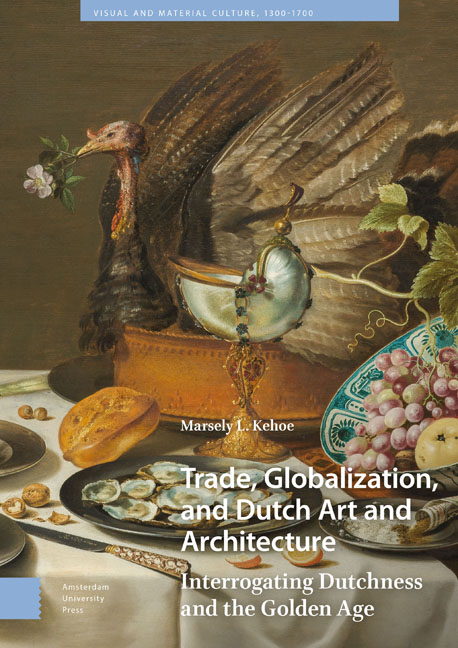Book contents
- Frontmatter
- Contents
- List of Illustrations
- 1 Introduction: Grasping at the Past
- 2 The Gilded Cage: Dutch Global Aspirations
- 3 Gathering the Goods: Dutch Still Life Painting and the End of the “Golden Age”
- 4 Dutch Batavia: An Ideal Dutch City?
- 5 Simplifying the Past: Willemstad’s Historic and Historicizing Architecture
- 6 Conclusion: The “Golden Age” Today
- Works Cited
- Acknowledgements
- Index
3 - Gathering the Goods: Dutch Still Life Painting and the End of the “Golden Age”
Published online by Cambridge University Press: 13 February 2024
- Frontmatter
- Contents
- List of Illustrations
- 1 Introduction: Grasping at the Past
- 2 The Gilded Cage: Dutch Global Aspirations
- 3 Gathering the Goods: Dutch Still Life Painting and the End of the “Golden Age”
- 4 Dutch Batavia: An Ideal Dutch City?
- 5 Simplifying the Past: Willemstad’s Historic and Historicizing Architecture
- 6 Conclusion: The “Golden Age” Today
- Works Cited
- Acknowledgements
- Index
Summary
Abstract: In the 1660s, as the Dutch grasp on world trade began to wane, the subgenre of still life painting known as pronkstilleven (ostentatious still life) developed. These sought-after paintings depicted exotic Dutch trade objects in the Dutch home with striking illusionism. This chapter considers the irregularity of the trade in an often-depicted exotic item, pepper, noting a public anxiety about this trade, and offers a new reading of still life as reorganizing the far reaches of the Dutch East India Company into a smaller domestic setting. The Dutch global reach is revised to exist solely within the Dutch home precisely as spice monopolies are challenged and English and French trade grows.
Keywords: global trade, pepper, domestic, still life painting
On a tabletop partly covered by a bunched-up Persian rug, a silver tray holds a delicate fruit-filled porcelain bowl and an elaborate metalwork mount, reminiscent of the nautilus mounts of chapter 2, elevating a delicate Venetian-style glass with red wine. (plate 4) The blade of a knife is anchored under the mount, and its marble handle rests under the bowl, projecting outwards. Behind the tray, a roemer of white wine stands on the tabletop, the raspberry-like prunts on the shaft just catching the light. Further in the background, a tall fluted glass about a third full of white wine or beer looms, light touching its rim. In looking at Willem Kalf's 1663 still life, the viewer is convinced that this is a straightforward depiction of objects on a tabletop, devoid of narrative. Kalf persuades the viewer of the reality of this scene by portraying minute details, the basic formal aspects of the objects, as well as in the rendering of diverse surface textures and especially light reflections.
Kalf created a coherent scene on this domestic tabletop. The light bouncing among the represented objects is the only action of this image, leading the viewer to examine each item in turn and its relationship to the next object. The porcelain and the silver are highlighted with a white light, while the glass and gilded surface of the mount glow yellow. The knife handle throws a white highlight that shines improbably on the bowl's surface.
- Type
- Chapter
- Information
- Trade, Globalization, and Dutch Art and ArchitectureInterrogating Dutchness and the Golden Age, pp. 85 - 124Publisher: Amsterdam University PressPrint publication year: 2023



